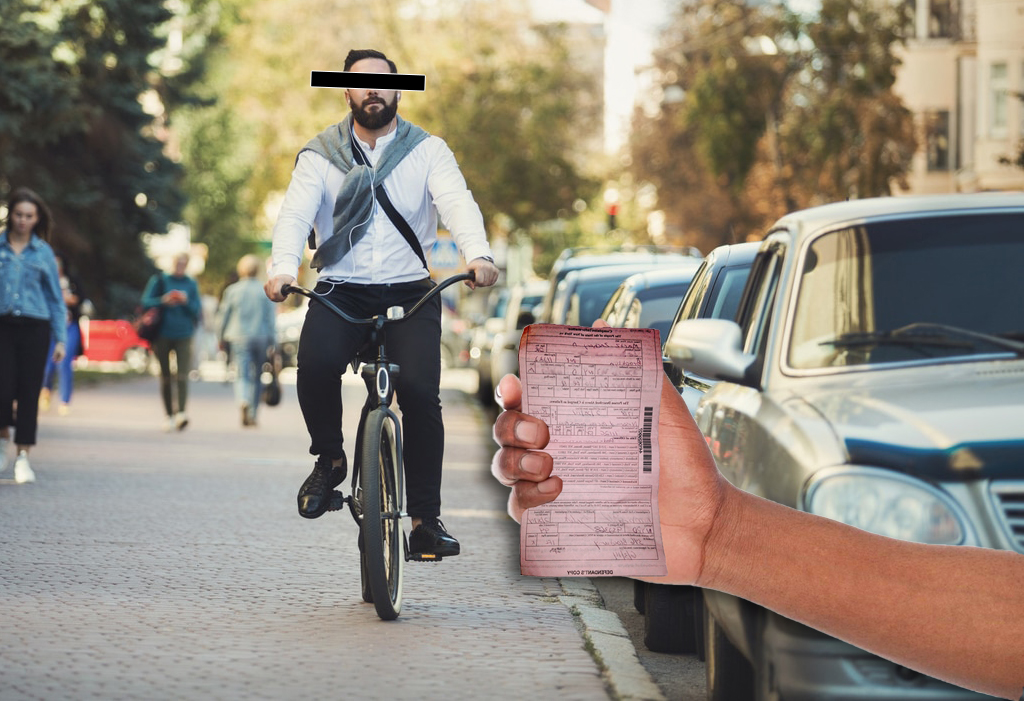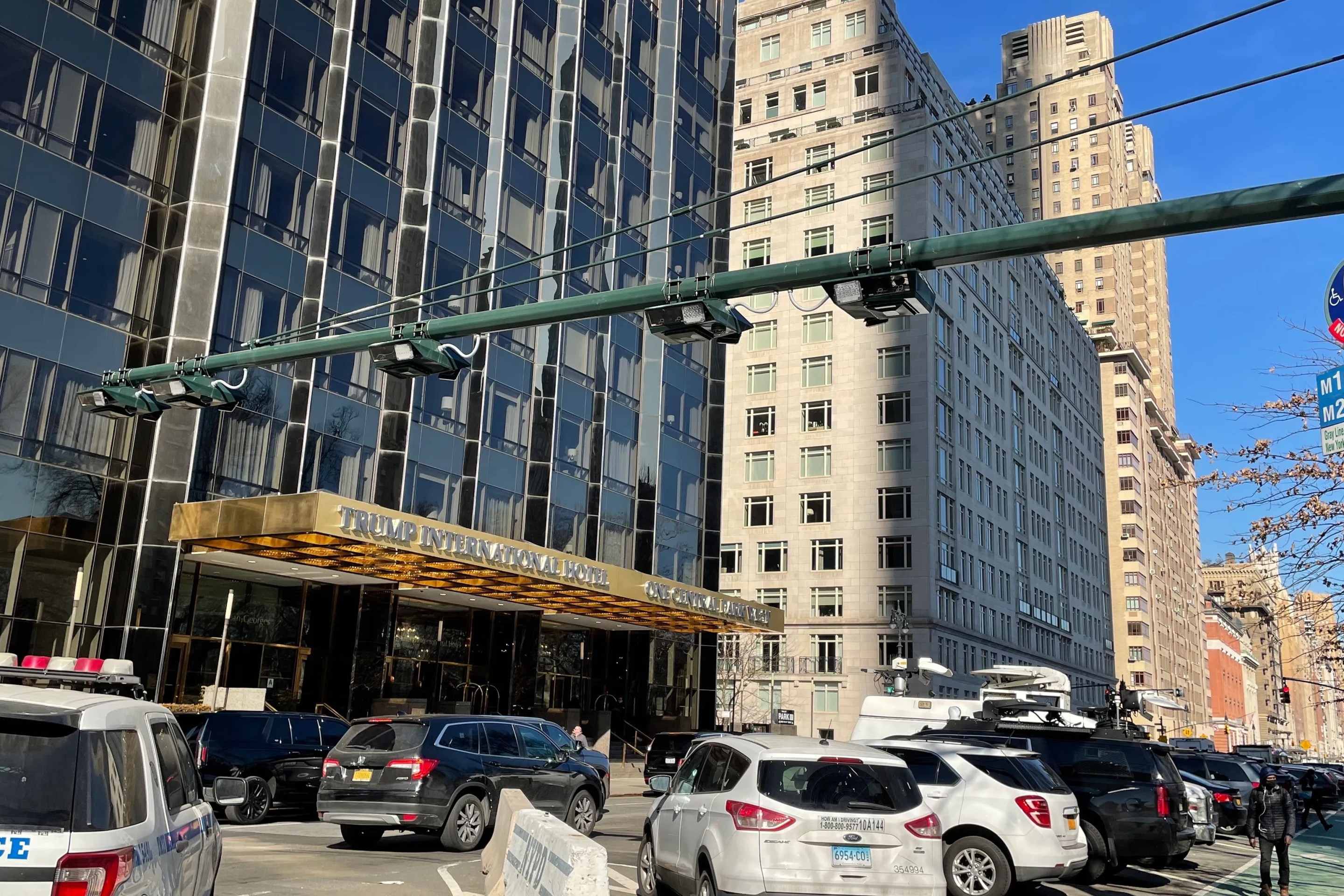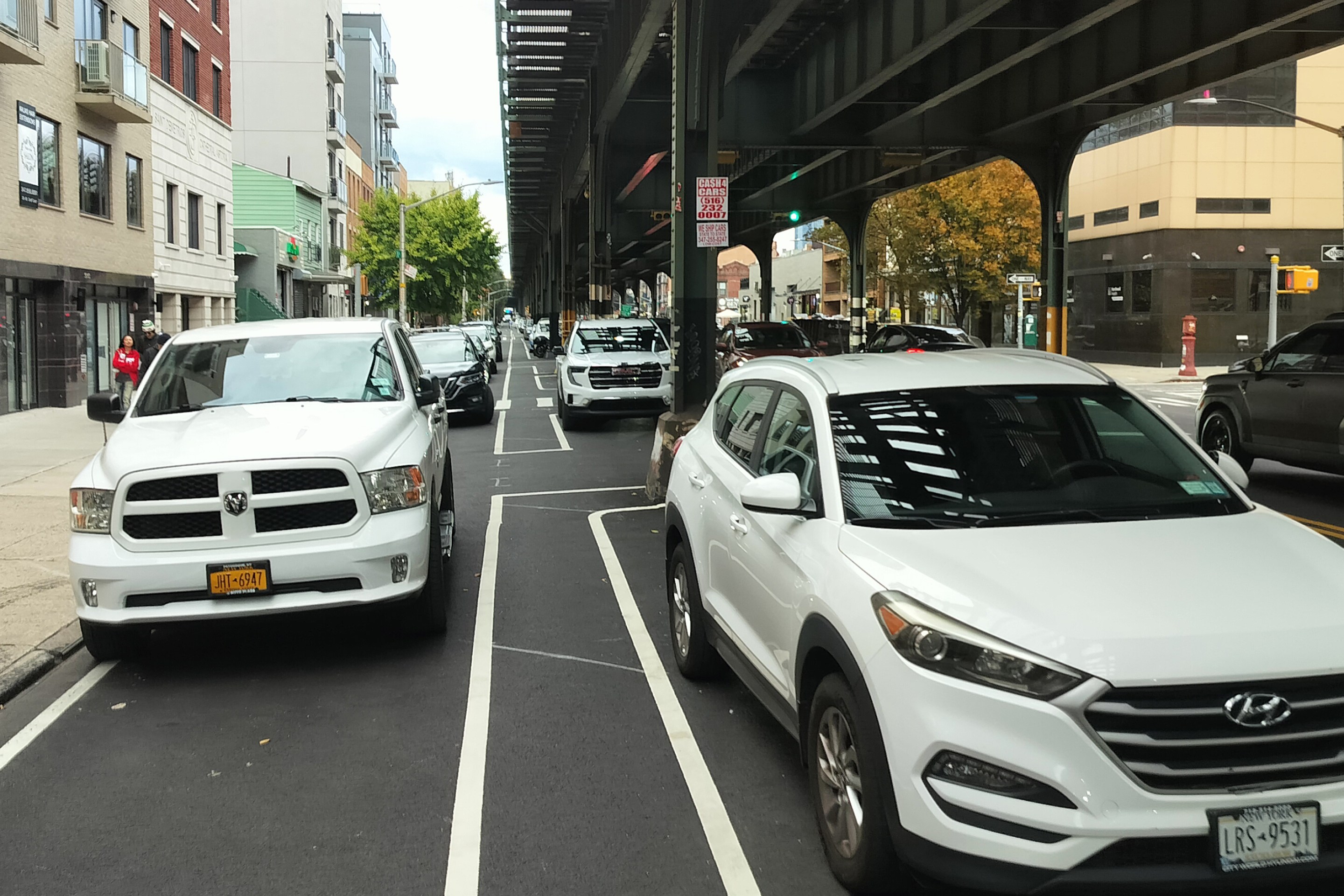
The U.S. Department of Transportation wants to know what you want out of America's next big transportation bill — and transportation reform advocates have some great ideas they'd love for you to steal.
On Aug. 20 — yes, that's just two days from now! — US DOT will close its comment window on "ideas, comments, and information for consideration in the development of the next surface transportation authorizing legislation," the bill that dictates how the federal government spends the vast majority of its transportation dollars.
That's a pretty tight window for a bill that won't be passed until at least September 2026, when the current transportation law (aka the Bipartisan Infrastructure Law) expires. And submitting general "ideas" for what will ultimately be a massive, 1,000+-page piece of legislation is pretty daunting, too! And to be clear, since DOT only writes a proposal that helps guide Congress in actually drafting that law, this is far from your last chance to engage.
Still, advocates across Americas say it's important to take this opportunity to make our voices heard — and they're encouraging you to amplify their ideas, in addition to your own.
Here are a few specific policies, ideas, and even specific bills to get you inspired to write a comment of your own.
Give localities more control, cash
A huge portion of vehicle miles are travelled on local city roads with dense concentrations of residents, pouring billions of dollars into a massive tax coffer known as the Highway Trust Fund. When it comes time to circulate that money back to U.S. communities, though, the Bipartisan Infrastructure Law mostly trusts state DOTs to divvy it up between urban areas and the network of highways that connect them — and they don't always play fair.
A Brookings study earlier this year found that an average of just 16 percent of federal formula transportation money ends up back in the pockets of urban communities that generate roughly 34 percent of gas taxes in the first place — meaning that cities are getting less than half of what they should. And that means they have less money to redirect those gas taxes towards the kinds of transit, walking, and biking projects that their residents tend to demand — and state DOTs have more to spend on endlessly expanding highways, including inside city borders where residents are actively resisting adding more asphalt.
That's why groups like the National Association of City Transportation Officials, the League of American Bicyclists, and the Association of Metropolitan Planning Organizations are all urging Congress to create a regional transportation block grant program, which would use a formula to calculate exactly how much each metropolitan area's fair share of gas taxes is, and guarantee them that money directly.
The planning organization group also says it's important to reduce "local match" requirements that can cut poorer communities off from accessing federal funds if they can't scare up local money for important progress, and allow federal funds to carry over from one year to the next if long-term projects don't wind down in time.
Speed up great projects and rein in bad ones
Even if cities had more direct cash to do great transportation projects, though, that wouldn't necessarily translate to new train lines and downtown congestion pricing programs across America — and ironically, a lot of that has to do with our approach to permitting and environmental review.
The current approach to reducing environmental and community harm "involves studying a project to determine its impacts and negotiating environmental mitigation efforts, but it does nothing to prevent the actual negative outcomes," Transportation for America explains in its reauthorization proposal.
As a result, the more-common projects are able to move through the process effectively, "while newer, more innovative, and often more environmentally friendly projects get hung up."
To stop destructive autocentric projects without delaying important multimodal ones, T4A says the answer isn't just to tweak the National Environmental Policy Act review process or remove steps from the permitting gauntlet, but to develop a radically new permitting and review framework based on the anticipated outcomes a project will have, like "how many jobs and essential services (like grocery stores, schools, banks, and medical care) people can access by all modes of transportation."
Other "outcomes" that Congress could require DOT to consider, of course, are climate and car domination. The GREEN Streets Act would require states and MPOs to analyze the vehicle miles traveled and emissions impacts of any project that increases vehicle capacity — and cancel them if those projects would put the state out of compliance with goals to reduce those metrics, which the same law would require them to set.
Meanwhile, T4A says its time to throw out outdated and disproven highway "performance" metrics like the "value of time" (read: driver's commute time, which quickly rebounds as newly widened highways fill up with new drivers). Meanwhile, "Travel demand models" used to justify highway expansions in the past should be evaluated to see if they were actually accurate before they're used again. (Spoiler alert: a lot of them weren't!)
"We should move from the current paradigm of review and process to one of standards and outcomes," T4A continues. "Federal funds should go to projects that have predictable positive environmental and community outcomes based on scientifically proven predictive models and approaches. Projects that do not meet minimum standards should only get federal support if they fully mitigate all impacts and then receive a lower proportion of federal support.
The League of American Bicyclists, meanwhile, emphasizes that small projects with proven benefits like bike lanes should be able to go through accelerated permitting processes. And for big multimodal projects like rail projects, the Rail Passengers Association, argues that DOT should establish an environmental review “shot clock" for rail, so if one agency fails to complete its review in a set amount of time, the project can automatically move forward.
And multiple organizations emphasized the need to correct for our country's long history of bad transportation projects but fully funding the Reconnecting Communities Program.
Actually put safety first
US DOT says that safety is its top priority — but the transportation bill under which it operates doesn't always reflect it. And advocates had a long list of ideas for how to more thoroughly weave safety into the next law, one policy at a time.
- In the "things it's hard to believe we don't already do" column, Transportation for America recommends that the next surface transportation bill "require states and MPOs to set targets to improve the safety of their roadways for all road users and develop a report on crashes that result in serious injury or fatality, along with design interventions that are tailored to reduce the specific crashes identified."
- The group also recommend that the next bill require DOT to "issue guidance to all transportation agencies on how to create and use quick-build demonstration projects to test new improvements in dangerous corridors and intersections, including for testing innovative designs and markings," so states can save lives fast while they undergo the lengthy process of designing more permanent solutions.
- Both T4A and NACTO put better vehicle safety standards on their legislative wishlist, especially establishing a minimum visibility standard for new cars that requires kids and wheelchair users to be visible from the driver's seat without the driver using a "frontier" camera, unless the motorist has a commercial driver's license. Both groups also called for new technologies Intelligent Speed Assist, and older ones like side impact guards on trucks.
- NACTO also wants communities to be directed to use better street design guides that focus on the needs of all road users like their own, rather than referring to guides that were developed for highways.
- The League of American Bicyclists, meanwhile, wants the federal government to incentivize the use of "proven safety countermeasures" like bike lanes, lighting, and crosswalks. Bills like the Sarah Debbink Langenkamp Actwould help do that by providing full funding from the feds instead of requiring onerous local matches on key programs.
- The League also wants Congress to increase funding for popular active transportation-boosting programs like Transportation Alternatives, Safe Streets and Roads for All, and the Active Transportation Infrastructure Investment Program.
- Most of the organizations endorse the Complete Streets Act, which would require states to direct a portion of their highway funding towards a new program to build multimodal infrastructure, and phase in requirements that all streets build with federal money eventually align with at least some Complete Streets goals.
- And of course, all of our safety goals would be easier to achieve if victims of traffic violence had a real voice at US DOT by passing the "DOT Victim and Survivor Advocate Act."
No more 'crumbling roads and bridges'
One of the most maddening things about America's obsession with expanding and building new highways is how many existing roads and lanes are actively falling apart.
That's why Transportation for America says it's past time for politicians to stop whining about potholes and actually require their state DOTs to set targets to improve the condition of pavements, both on the interstates and on the legacy highways that run through so many of our communities.
If it really wants to get serious, Congress should "maintain the 80-percent federal match for repair projects, but lower the federal match for new capacity projects to 50 percent," T4A said. And if states fail to hit their repair targets even with that robust federal help, they should get federal technical assistance to see where they're going wrong — and be required to redirect federal dollars towards maintenance alone.
"If your house has a leaky roof, you fix that before remodeling your kitchen," the group wrote. "The federal transportation program should do the same and prioritize existing maintenance needs ahead of building new things, which require decades of additional repair costs."
The transit and rail systems we deserve
For too long, city transit agencies have mostly only received federal money for capital projects — things you build, like train lines, or buy, like buses — and not to pay the bus drivers, workers, and other "operations" costs that keep networks running. That's why organizations like T4A say it's time to "establish a dedicated federal stream of funding to support increases in transit service," or simply "operations funding," like the program outlined in the Stronger Communities Through Better Transit Act last year.
Some advocates argue that a particularly good way to inject more operations funding into agencies across America would be to include the Freedom to Move Act in the next reauthorization, which would give communities across the country a chance to pilot fare-free programs, as well as providing them cash to improve their service in targeted areas.
T4A also argues that we need more funding for rural transit as well as to streamline the many rural transit programs across the federal government. And they also say it's past time to promote transit-oriented development by providing higher matches and faster permitting processes to grants that make it a priority.
For shared long-distance transportation, the Rail Passengers Association urges DOT to push not just for more money for trains, but also to form the first-ever National Long-Distance Rail Service Commission "to bring together all the Federal agencies with a role to play in building out this new network."
The organization has also won praise for its proposal to launch a federally backed National Equipment Leasing Pool, which would make it easier for railway operators to launch new lines or replace trains that get damaged, rather than waiting years for procurement. And the group is pushing for the passage of the All Aboard Act, which would create the first-ever dedicated funding program for rail, among other exciting changes.
... the list goes on
Of course, we can't dig into every recommendation transportation reform advocates have made for the next surface transportation authorization bill — though we encourage you to check out their platforms at the links below for more detail, especially when it comes to topics we couldn't touch here, like how to fix the Highway Trust Fund, address the rise of autonomous vehicles, and put cities in the driver's seat on whatever emerging mobility concerns might crop up as technology evolves over the coming year.
It's time to fight.
In addition to specific legislation previously covered by Streetsblog, his article references proposals from the following groups:
- Transportation for America
- The Association of Metropolitan Planning Associations
- The National Association of City Transportation Officials
- The League of American Bicyclists
- The Rail Passengers Association
- The American Public Transit Association
And don't forget to use a tool like this one from the League of American Bicyclists to submit your thoughts, or follow step-by-step instructions like these ones from to compose your message directly in your own words.
Got a reauthorization proposal we didn't cover here that you think an advocacy-focused audience should know about? Reach out.






